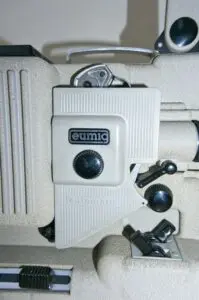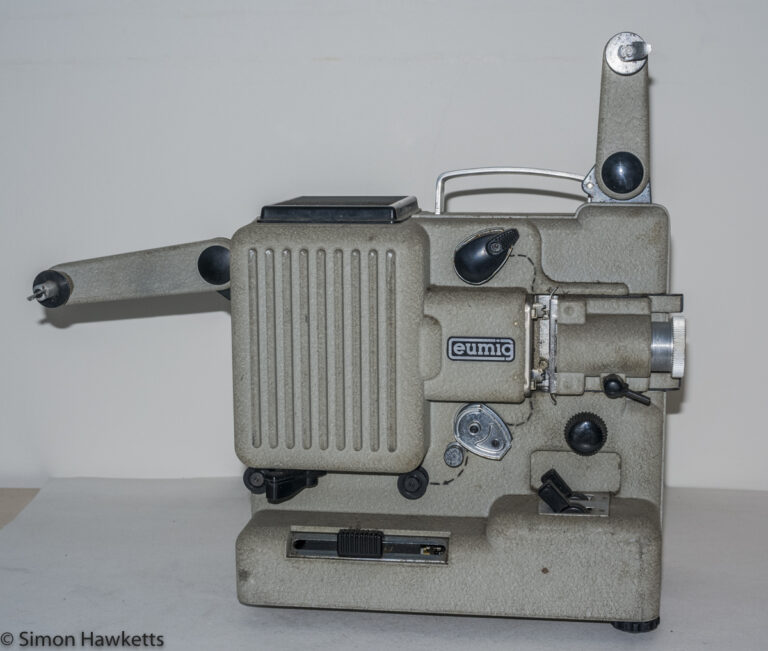Eumig P8 automatic 8mm cine projector
This article looks at the Eumig P8 automatic 8mm cine projector, which was one of the later models in the P8 range that Eumig produced in great quantities in the 1950s and 60s.
Eumig P8 automatic images
There are some images of the Eumig P8 automatic film projector in the gallery below.
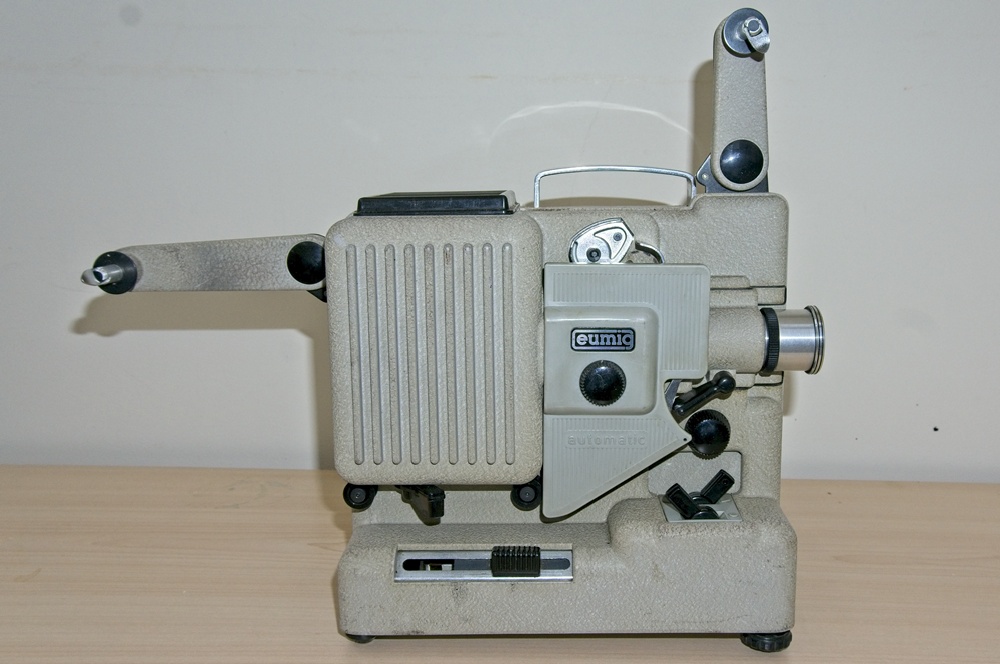
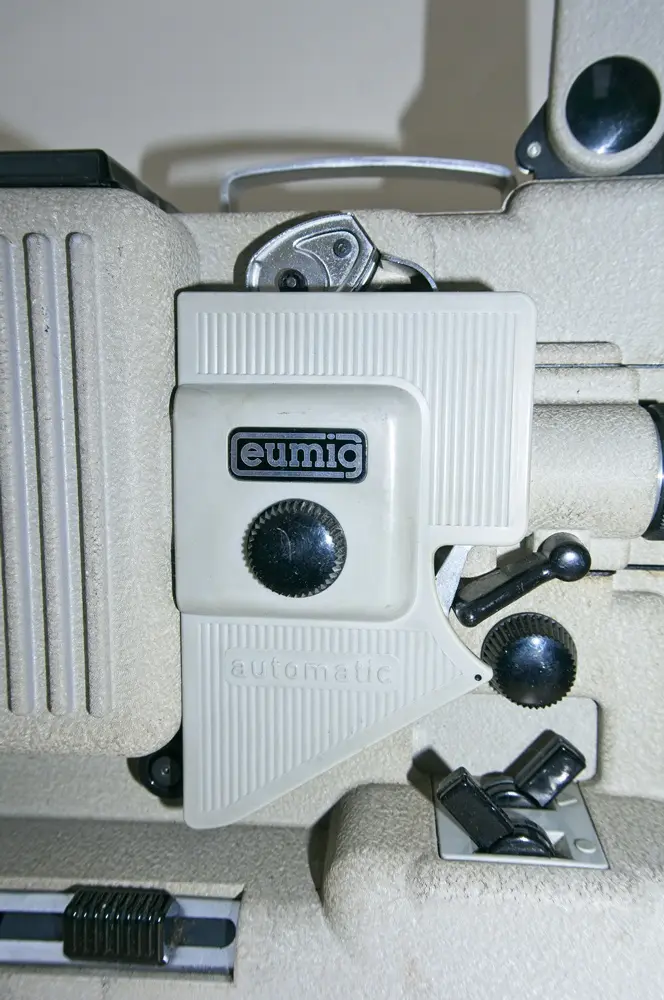
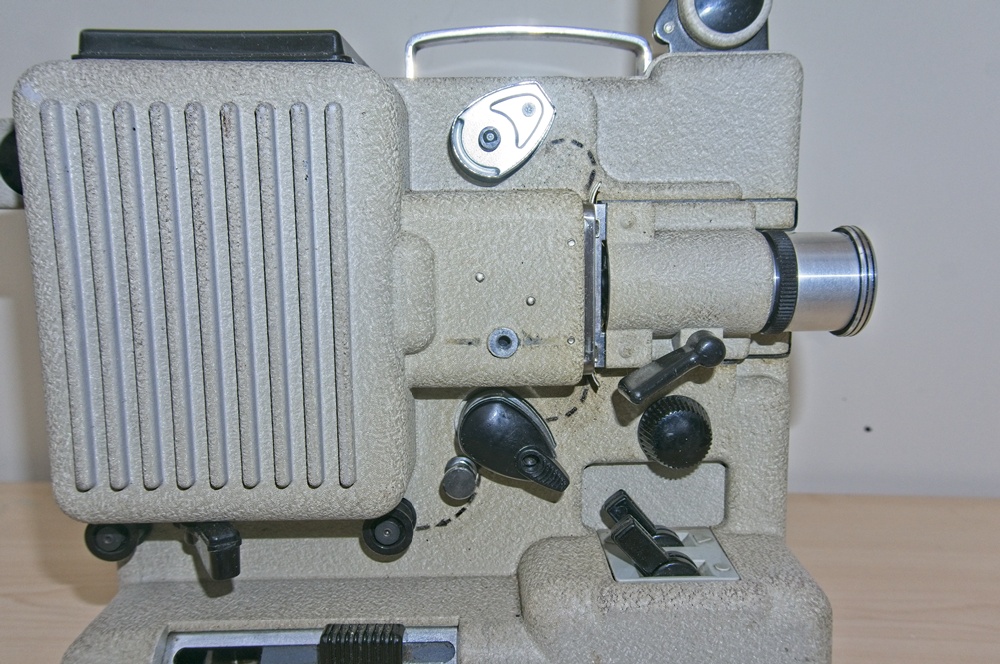
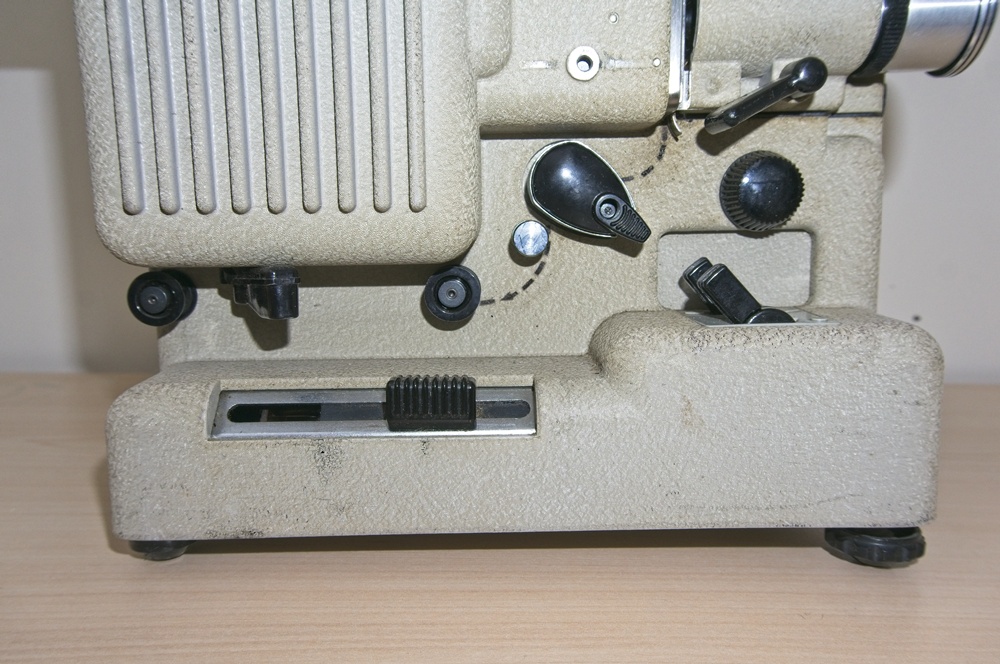

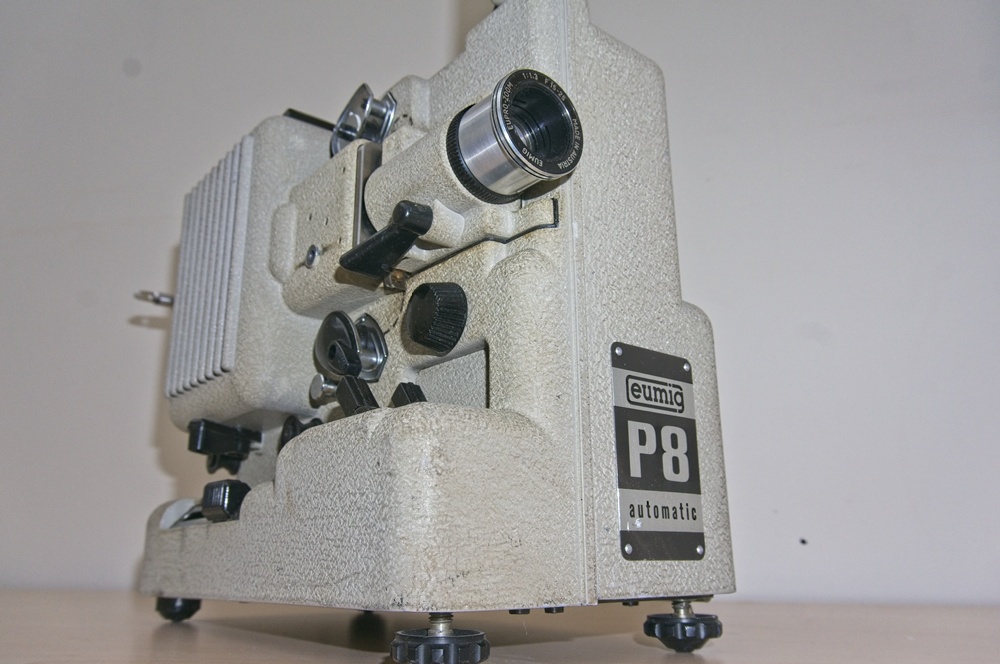
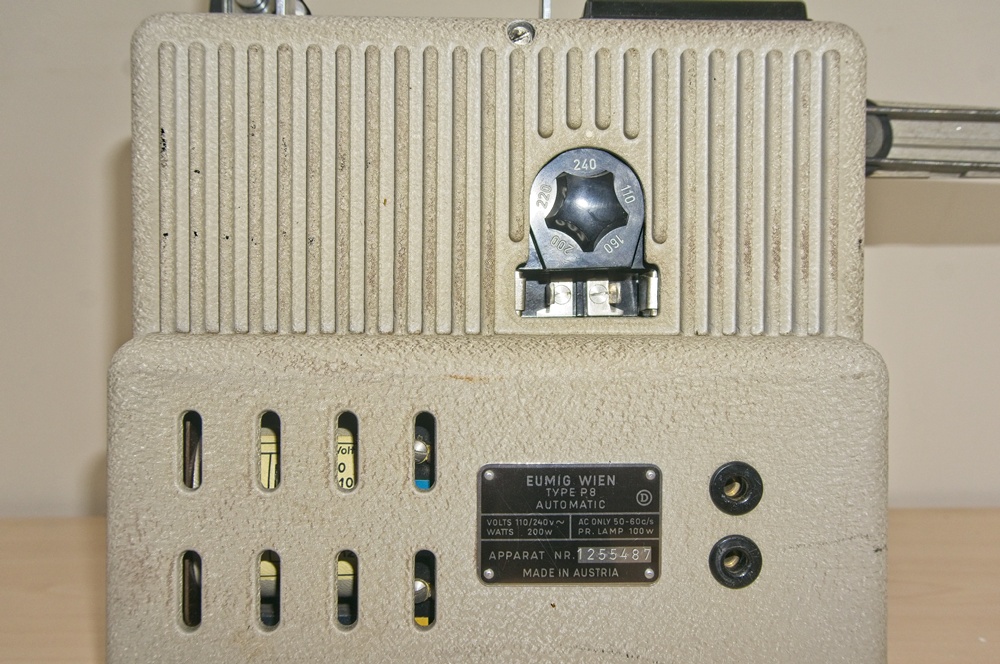
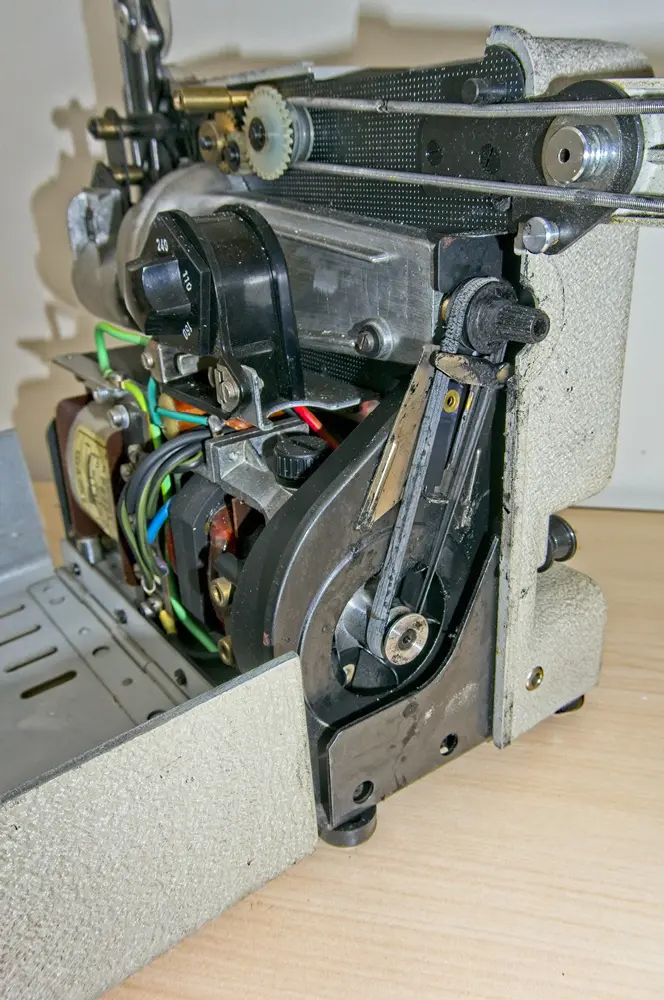
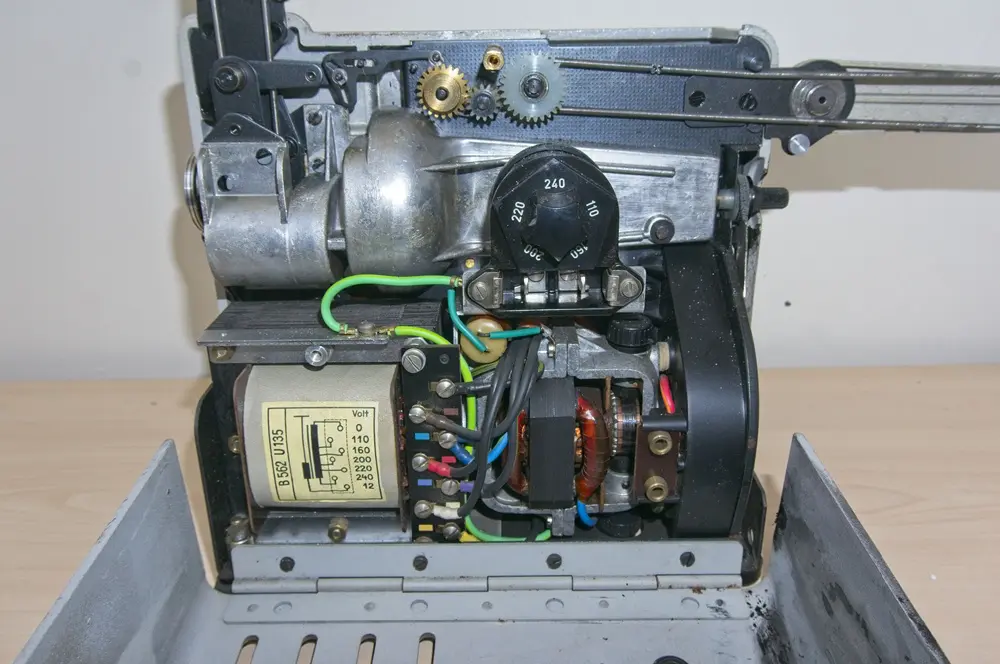
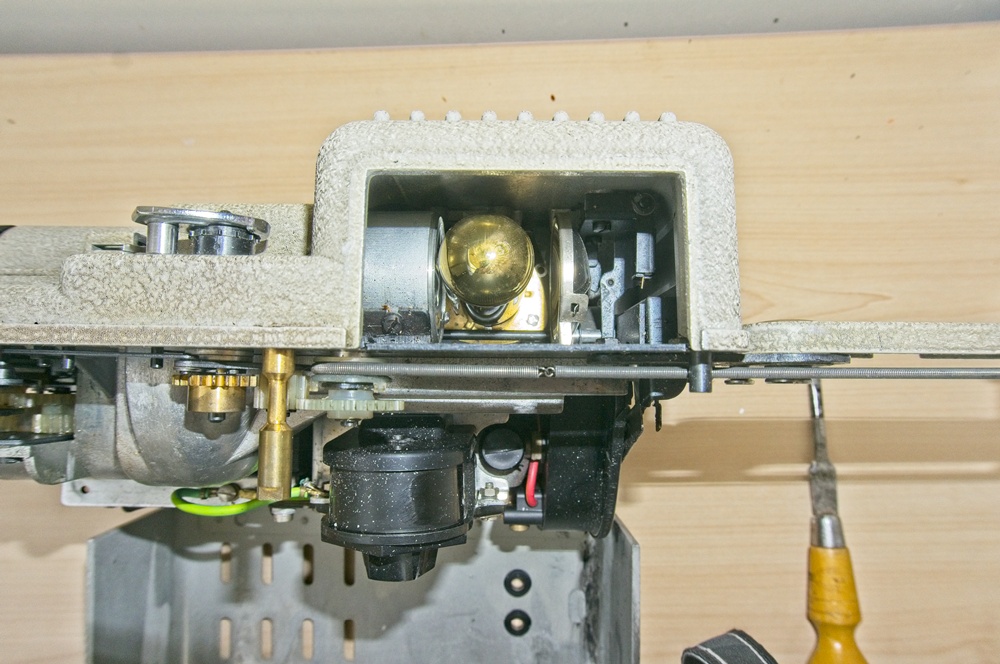
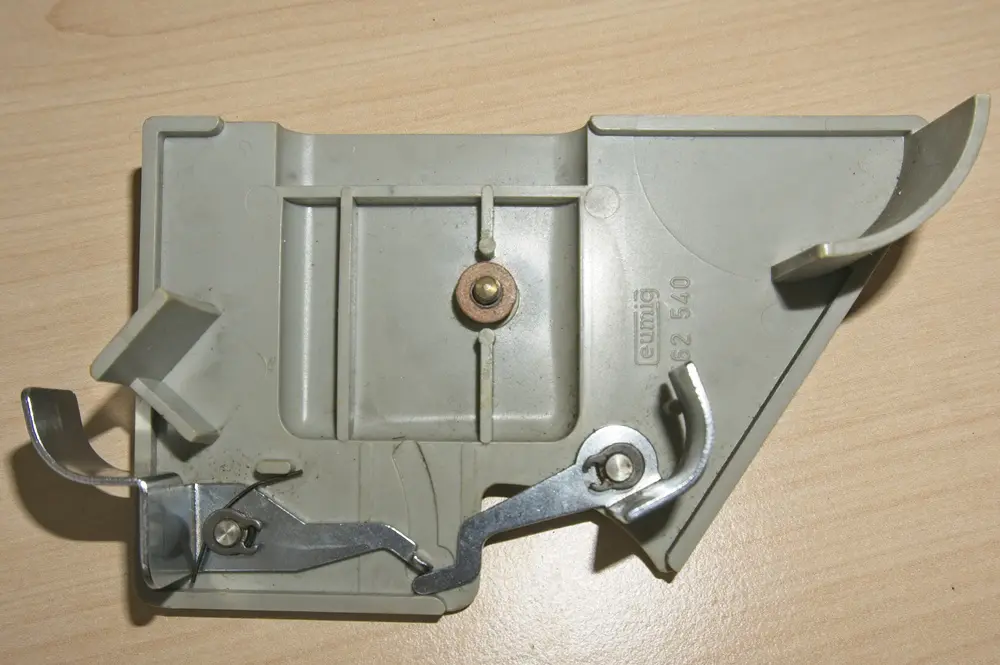
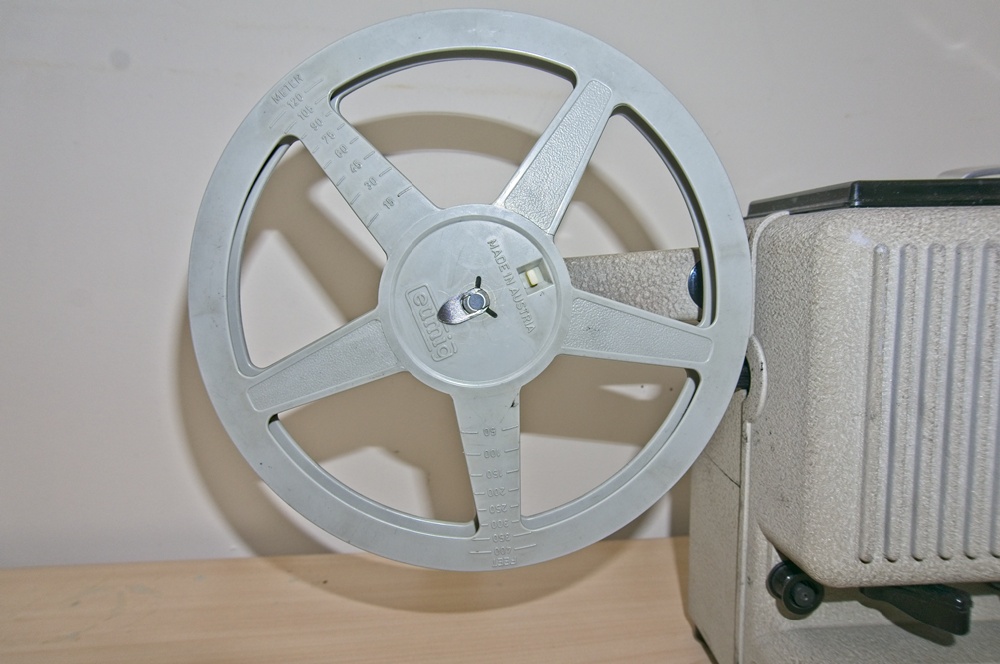
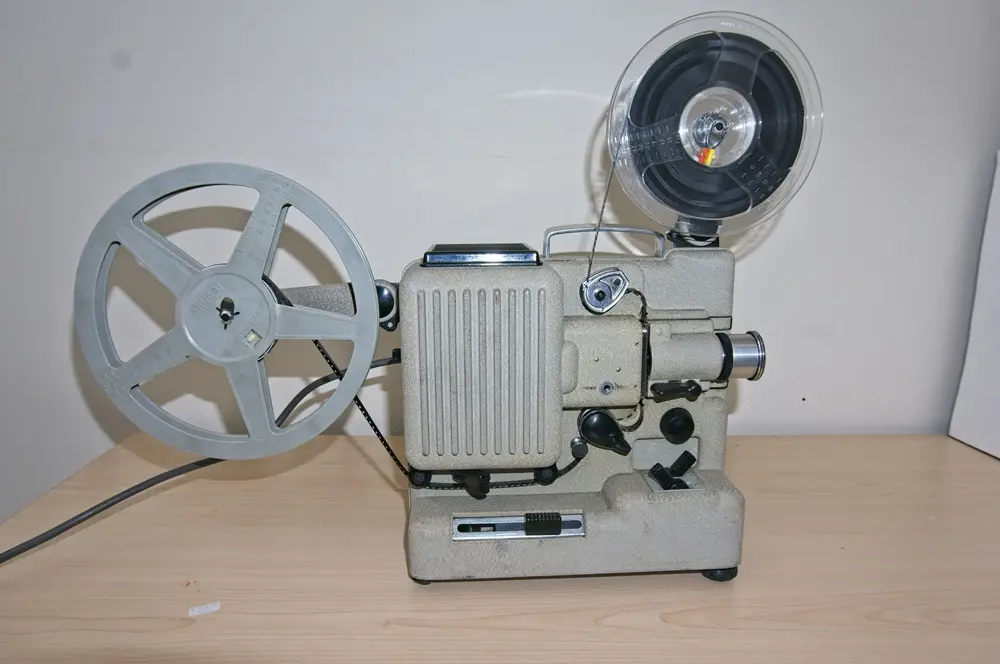
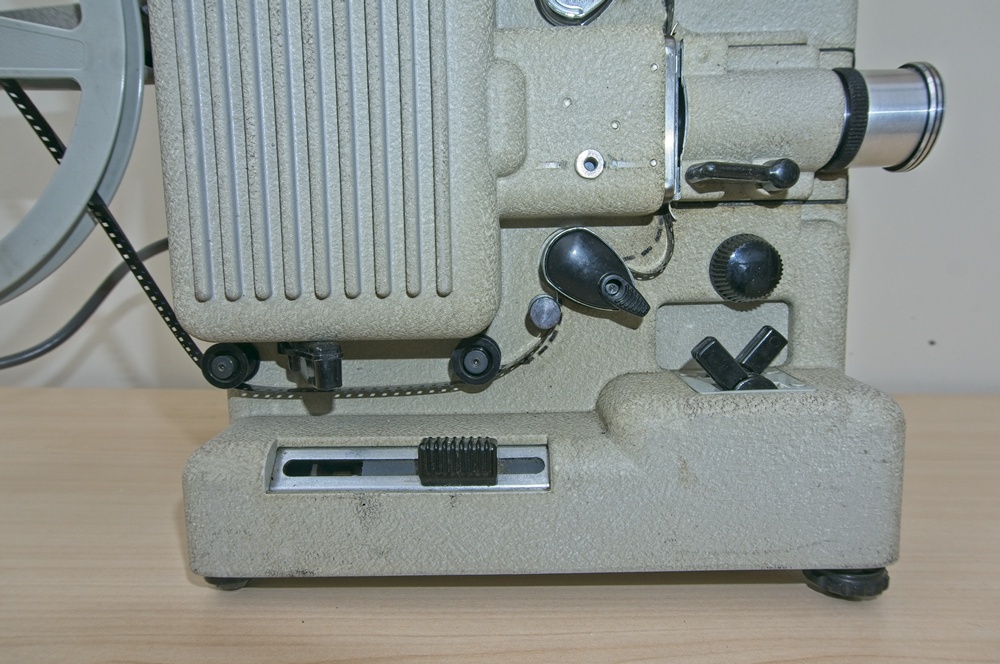
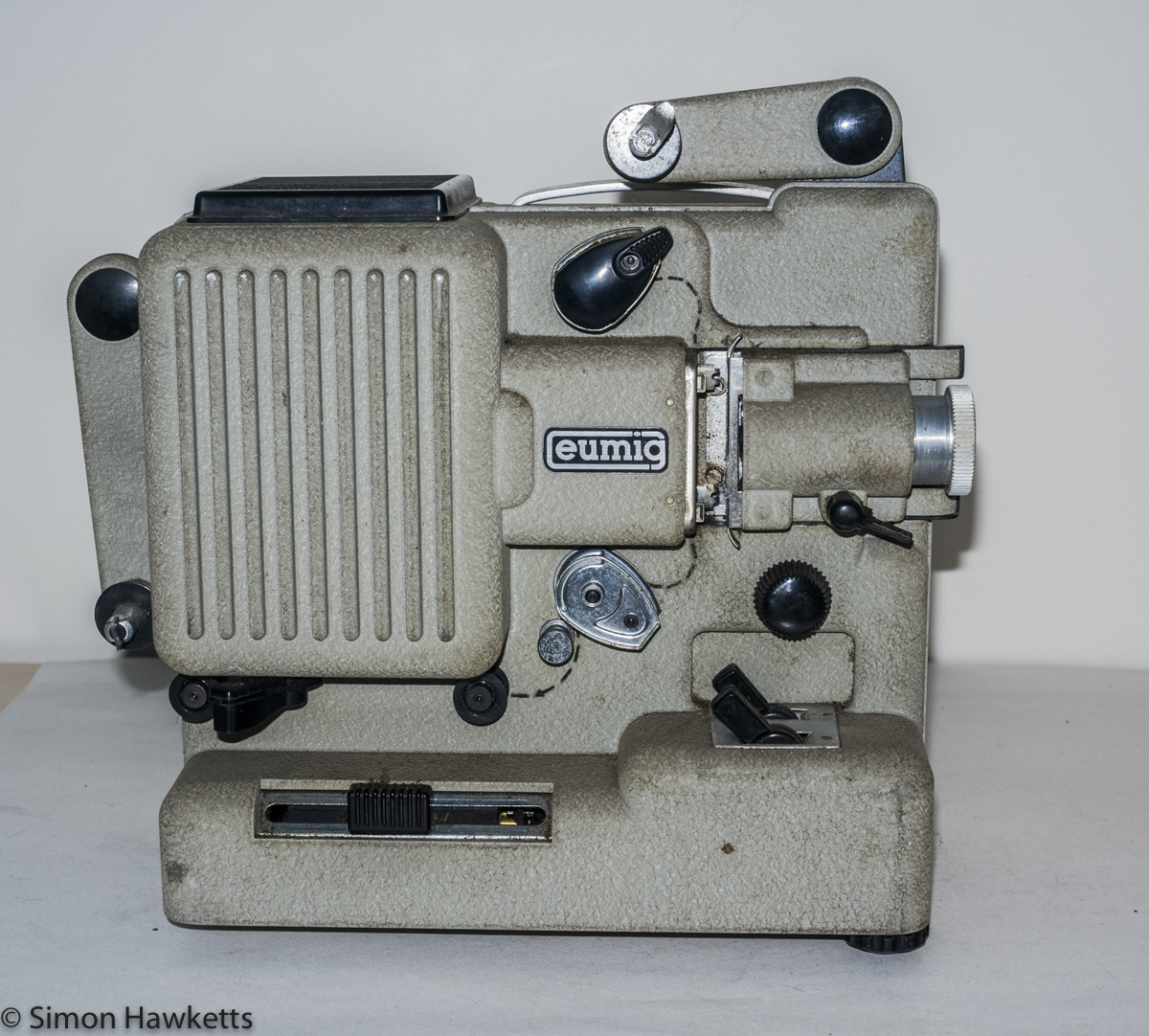
My Eumig P8 automatic Projector
I bought this Eumig P8 automatic projector for a few pounds from eBay primarily because it came with a collection of 8 mm films rather than for the actual projector itself. When I received the package however, I found the unit is actually both a different model than the other Eumig P8 I have, and also is in considerably better condition.
The only actual damage I can find with this example is that the plastic cover of the feed sprocket has come off and was lying in the bottom of the box. The seems to be a standard problem with the P8 – my other unit was missing the bottom one. I will probably see if I can fit the top component from my P8m to this unit to make it perfect.
Mechanically there was one fault which was easy enough to find and repair; the drive was not being transmitted because the drive belt had degraded to a mass of sticky black goo in the back of the projector. After some cleaning up with paper towels and cotton buds soaked in IPA, I used the drive belt from the P8m as a replacement.
All in all this was quite a good buy for the few pounds I paid for it. The unit seems to work perfectly, there was a handbook, mains lead and take up spool supplied as well and the mechanical condition seems pretty good.
Because the projector works, I was also able to confirm that the problem with my other P8 which stops the lamp from lighting is not the lamp itself because it works fine in this unit. That means that I have a spare lamp, which is quite useful since they are no longer made and quite expensive to buy.
Eumig P8 Automatic Projector Description.
The Eumig P8 Automatic was a later model in the Eumig P8 range and add the option to automatically thread the film.
Initially, I assumed this was the same as auto-feed, which many later projectors had, but it isn’t quite the same thing.
In an auto-feed projector, the film is fed into the projector, and it is pulled through the film path and appears out of the machine at the take-up spool. In some cases the film is automatically caught by the take-up spool and the machine is ready to go.
The P8 Automatic is not that advanced (although I believe the P8 Novo did add that functionality). With this unit, the film is automatically threaded through the initial film path of the projector and needs to be manually trained along the bottom of the machine, under the lamp holder and onto the take-up spool once it appears at the bottom of the auto-threader. This action is achieved with a plastic component which is screwed on the body of the projector and basically has film guides to force the film into the correct loops and down through the film gate.
In my experience with this projector the auto threading is not very successful. I found the film bunched up in the device which is supposed to form the loop at the top of the projector, and I found it easier to remove the auto-threader and manually thread the projector. The missing plastic cover on the sprocket wheels make is slightly harder to get the film into the correct path, but it’s certainly doable.
In many ways, other than the auto-feed device, this unit is very similar to the P8m which I have already featured on this site, so I won’t go into too many details which would be a repeat of the other article – please follow the link above to read that article if you are interested.
I will mention that the lens is also different from the P8m, however. This unit is fitted with an F/1.3 15 – 25 mm zoom lens which allows the size of the projected picture to be changed without moving the projector’s position relative to the screen.
Projector use.
Since I couldn’t actually project a film with my P8m, this unit is the first of the P8 series that I’ve actually used for viewing a film and I found it quite an enjoyable experience. The projector is quieter than the Chinon C-300 I normally use, and gives a picture which requires less fiddling with the focus and framing controls once it is set up. Although I don’t at the moment have a proper vintage projection screen, setting up a piece of white card on the wall and projecting one of the films which came with the unit provided a nice steady picture which was quite bright and stable.
One other point I would make about the P8 is that the general reliability of the unit seems quite good. I know I have another unit which doesn’t work, but they certainly seem more reliable as a design than the later Eumig models which have a vertically mounted motor and change from forward to reverse by pushing the motor drive against rubberised discs. I have bought about 3 of those style machines and even the ones which have been bought a ‘fully working’ have problems with the motor mounts.
Video
Here is a short video clip of the Projector showing a film of a trip along the Norwegian coast which was taken in 1971.
Projector Handbook.
Because I had a copy of the handbook supplied with this projector I thought it may be useful to other owners so I’ve scanned it for viewing below.
Projector Specifications.
- Eumig P8 automatic standard 8 film projector
- Automatic threading of film through the film gate
- Forward or reverse projection which variable speed
- Single frame viewing with reduced brightness
- Power rewind
- 12V 100W lamp
- Eumig f/1.3 15 – 25mm Zoom lens
- Lamp socket for powering a table lamp during film viewing evenings
- Small, portable unit
- Handbook viewable above
- Serial No: 1255487
Discover more from Everything Vintage
Subscribe to get the latest posts sent to your email.

